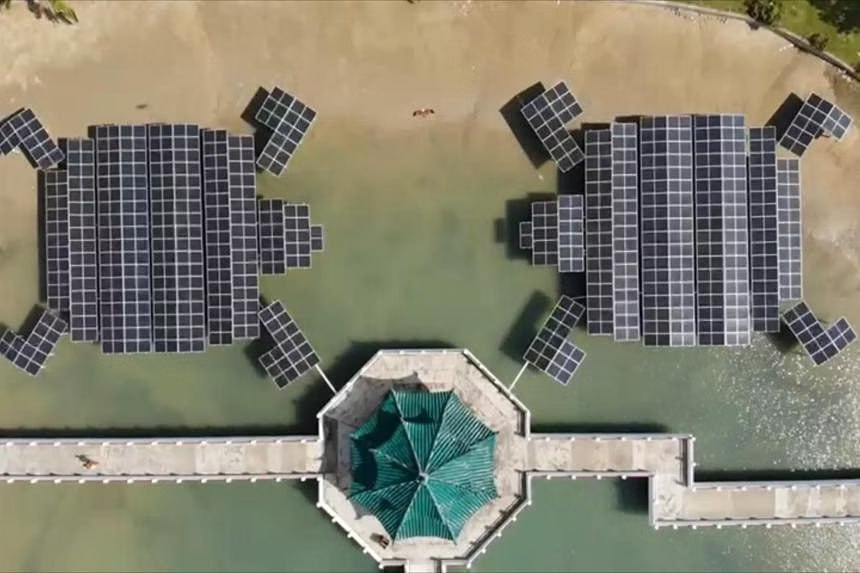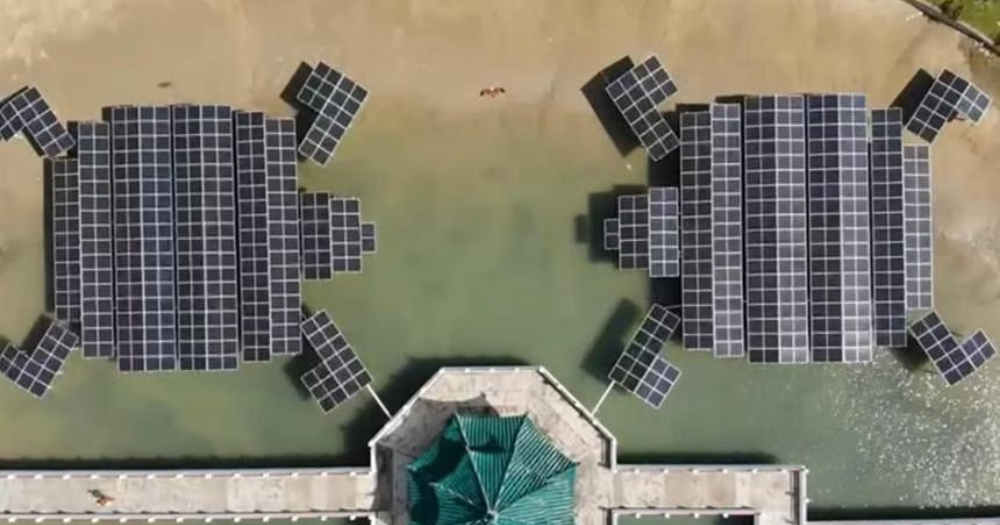Singapore's Kusu Island has now become completely self-sufficient due to solar power, and is able to produce its own water and electricity.
The island, whose name means "tortoise" in Hokkien, sees devotees flocking there for pilgrimages during the fourth quarter of the year.
It now boasts an array of solar panels and a desalination plant, courtesy of a collaboration between the Singapore Land Authority (SLA), which owns the land, and Nanyang Technological University (NTU).
Solar panels can power 52 four-room HDB flats annually
The deployment of the project on Kusu Island first started in 2020, according to a press release by NTU.
In the fourth quarter of 2022, the island's solar photovoltaic and desalination systems became operational just in time for the 2022 pilgrimage season, The Straits Times reported.
The systems were also able to support a record number of 22,523 visitors in October 2023.
The island's solar power plant is capable of generating over 230 megawatt hours each year, enough to power around 52 four-room HDB flats, and reduce an estimated 96 metric tons of carbon emission per year.
Backup batteries can also store enough power for two days in the event of cloud cover or rain.
The plant's electricity is used to power the island's facilities, such as toilets and shower areas, as well as a food centre, which opens only during the pilgrimage months.
It also powers the island's container-sized desalination plant, which can produce 20,000 litres per day or enough water for 140 people daily.
The water produced by the plant is currently in the end stages of being certified as drinkable.
Solar panels installed in a tortoise pattern
To pay tribute to the legacy of Kusu Island, the panels are laid out in the pattern of two tortoises, in a shallow lagoon in front of the iconic Da Bo Gong (Tua Pek Kong) Temple.
They perform 10 to 15 per cent more efficiently than conventional rooftop solar panels due to the cooling effect of the water.
Here's how the panels look like from a bird's eye view:
 Image from NTU.
Image from NTU.
Next up: Pulau Hantu
SLA and NTU are also installing a similar system on the nearby Pulau Hantu, ST reported.
It is estimated for completion in 2024.
This system will have a smaller capacity as the island attracts fewer visitors who are mainly divers and nature lovers.
It will be installed on land due to Pulau Hantu lacking a suitable lagoon.
Top image from Nanyang Technological University.

If you like what you read, follow us on Facebook, Instagram, Twitter and Telegram to get the latest updates.



